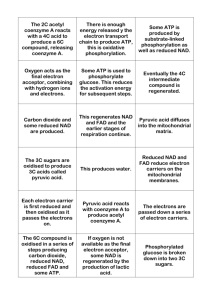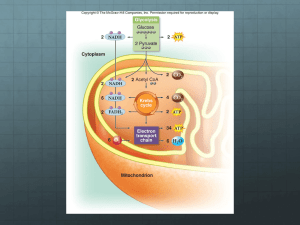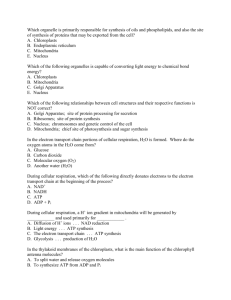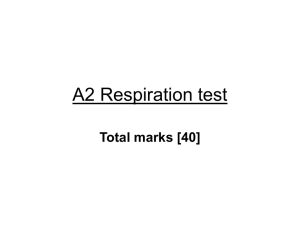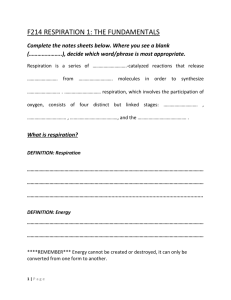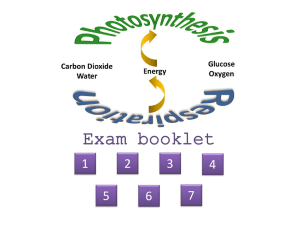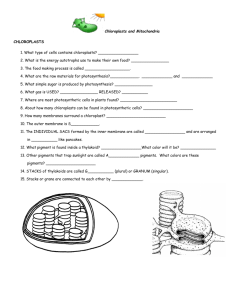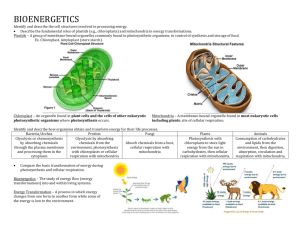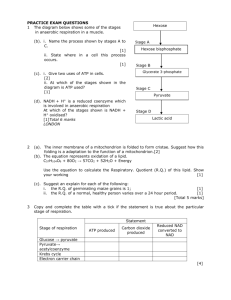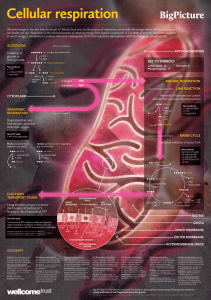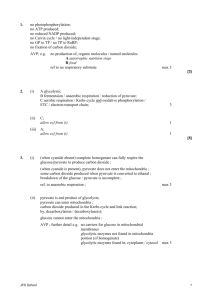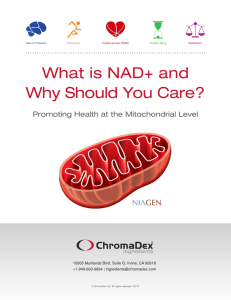Respiration key facts
advertisement
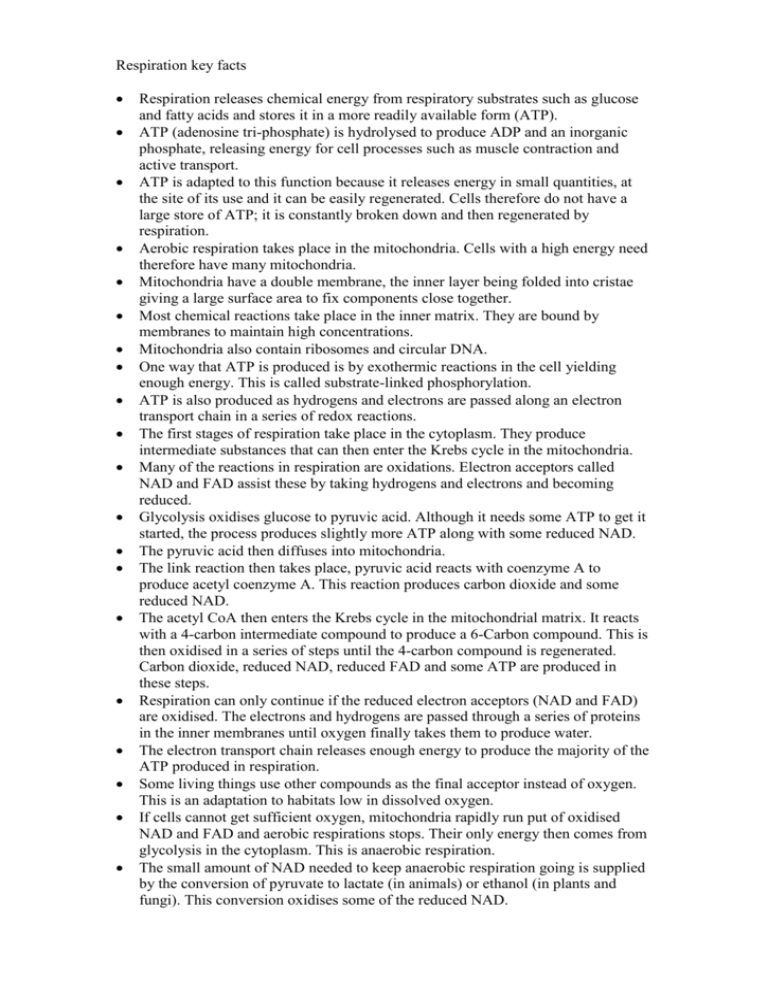
Respiration key facts Respiration releases chemical energy from respiratory substrates such as glucose and fatty acids and stores it in a more readily available form (ATP). ATP (adenosine tri-phosphate) is hydrolysed to produce ADP and an inorganic phosphate, releasing energy for cell processes such as muscle contraction and active transport. ATP is adapted to this function because it releases energy in small quantities, at the site of its use and it can be easily regenerated. Cells therefore do not have a large store of ATP; it is constantly broken down and then regenerated by respiration. Aerobic respiration takes place in the mitochondria. Cells with a high energy need therefore have many mitochondria. Mitochondria have a double membrane, the inner layer being folded into cristae giving a large surface area to fix components close together. Most chemical reactions take place in the inner matrix. They are bound by membranes to maintain high concentrations. Mitochondria also contain ribosomes and circular DNA. One way that ATP is produced is by exothermic reactions in the cell yielding enough energy. This is called substrate-linked phosphorylation. ATP is also produced as hydrogens and electrons are passed along an electron transport chain in a series of redox reactions. The first stages of respiration take place in the cytoplasm. They produce intermediate substances that can then enter the Krebs cycle in the mitochondria. Many of the reactions in respiration are oxidations. Electron acceptors called NAD and FAD assist these by taking hydrogens and electrons and becoming reduced. Glycolysis oxidises glucose to pyruvic acid. Although it needs some ATP to get it started, the process produces slightly more ATP along with some reduced NAD. The pyruvic acid then diffuses into mitochondria. The link reaction then takes place, pyruvic acid reacts with coenzyme A to produce acetyl coenzyme A. This reaction produces carbon dioxide and some reduced NAD. The acetyl CoA then enters the Krebs cycle in the mitochondrial matrix. It reacts with a 4-carbon intermediate compound to produce a 6-Carbon compound. This is then oxidised in a series of steps until the 4-carbon compound is regenerated. Carbon dioxide, reduced NAD, reduced FAD and some ATP are produced in these steps. Respiration can only continue if the reduced electron acceptors (NAD and FAD) are oxidised. The electrons and hydrogens are passed through a series of proteins in the inner membranes until oxygen finally takes them to produce water. The electron transport chain releases enough energy to produce the majority of the ATP produced in respiration. Some living things use other compounds as the final acceptor instead of oxygen. This is an adaptation to habitats low in dissolved oxygen. If cells cannot get sufficient oxygen, mitochondria rapidly run put of oxidised NAD and FAD and aerobic respirations stops. Their only energy then comes from glycolysis in the cytoplasm. This is anaerobic respiration. The small amount of NAD needed to keep anaerobic respiration going is supplied by the conversion of pyruvate to lactate (in animals) or ethanol (in plants and fungi). This conversion oxidises some of the reduced NAD.
